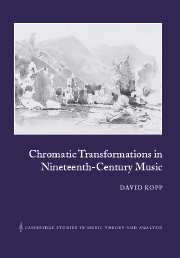Book contents
- Frontmatter
- Contents
- Foreword by Ian Bent
- Acknowledgements
- 1 Common-tone tonality
- 2 Three examples of functional chromatic mediant relations in Schubert
- 3 Key harmonic systems and notions of third relations from Rameau to Hauptmann
- 4 Hugo Riemann
- 5 Twentieth-century theory and chromatic third relations
- 6 Riemann's legacy and transformation theories
- 7 A chromatic transformation system
- 8 Chromatic mediant relations in musical contexts
- 9 Five analyses
- Bibliography
- Index
- Compositions cited
2 - Three examples of functional chromatic mediant relations in Schubert
Published online by Cambridge University Press: 22 September 2009
- Frontmatter
- Contents
- Foreword by Ian Bent
- Acknowledgements
- 1 Common-tone tonality
- 2 Three examples of functional chromatic mediant relations in Schubert
- 3 Key harmonic systems and notions of third relations from Rameau to Hauptmann
- 4 Hugo Riemann
- 5 Twentieth-century theory and chromatic third relations
- 6 Riemann's legacy and transformation theories
- 7 A chromatic transformation system
- 8 Chromatic mediant relations in musical contexts
- 9 Five analyses
- Bibliography
- Index
- Compositions cited
Summary
INTRODUCTION
Chromatic mediant relations are, of course, not exclusive to nineteenth-century music. Their presence in Renaissance music is familiar. In Baroque style they often occur at the boundaries between large sections of pieces, as a half cadence resolving to an unexpected new tonic. Similarly in the music of Haydn and Mozart, they appear most often as major-third mediants at the boundaries between sections in a minuet or scherzo. Between or within phrases, though, they are exceptional. In Beethoven's and Schubert's music, chromatic mediants began to appear with greater regularity and to find their way into more local harmonic contexts. As their presence grew and their profile became more familiar, chromatic third relations gradually became an accepted and much-exploited aspect of nineteenth-century harmonic practice. It is this normative practice which will be examined throughout the following chapters.
This chapter will present examples from three works of Schubert – two songs and the last piano sonata – which contain straightforward and compelling instances of direct chromatic mediant relations at varying levels of structure. The analyses will include consideration of alternative approaches and their limitations. Schubert was only one of many nineteenth-century composers who capitalized on the allure of chromatic mediants. However, more than anyone else, he was probably responsible for the clear, consistent, and organized use of chromatic mediant relations that brought them into the sphere of normative tonal practice.
- Type
- Chapter
- Information
- Chromatic Transformations in Nineteenth-Century Music , pp. 18 - 32Publisher: Cambridge University PressPrint publication year: 2002



